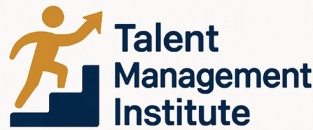Recognizing the Role of Performance Evaluations
Performance evaluations are a cornerstone in the realm of talent management, serving as a pivotal tool for understanding and fostering employee development. Many organizations employ these evaluations to assess how team members align with organizational goals, which aids managers in making informed decisions. It’s crucial for these evaluations to go beyond just measuring job performance. By adopting a comprehensive performance review template, organizations are better equipped to evaluate various aspects of an employee’s contributions.
Why are performance reviews so vital? First, they provide a structured mechanism for employee feedback, enabling managers to offer constructive criticism and highlight areas improvement can be achieved. From a broader perspective, these reviews help in identifying specific employee needs and facilitate personal and professional growth. For instance, job performance indicators derived from evaluation forms can pinpoint areas where employees may require further training or support.
Additionally, performance reviews play a significant role in setting and revising goals, ensuring they are aligned with both individual job descriptions and overall company objectives. Organizations often utilize performance management to integrate these evaluations into their quarterly and annual performance review cycles, making them more than just a box-ticking exercise.
Creating a robust evaluation form that captures both quantitative and qualitative data can help in capturing a holistic picture of employee performance. Moreover, a well-structured review template can lead to more productive discussions between managers and employees about expectations, achievements, and future initiatives. If you wish to dive deeper into how to harness these evaluations effectively, you might find it helpful to explore this
resource on unlocking the potential of employee assessment tools. This can aid managers and HR professionals in structuring a more effective and efficient review process.
Essential Elements to Craft Powerful Review Templates
Performance review templates play a pivotal role in streamlining the annual performance evaluation process for both managers and employees. A well-structured template ensures that managers can effectively assess job performance while helping employees chart their professional development paths. To create impactful review templates, several key components should be integrated:
- Clear Objectives: The primary aim of any performance review is to align employee objectives with organizational goals. Therefore, the template must clearly articulate specific performance targets and expectations. This helps employees focus on their priorities and areas for improvement.
- Balanced Evaluation Criteria: While it is important to evaluate job performance based on quantitative metrics, qualitative aspects such as teamwork and leadership qualities should not be overlooked. A balanced evaluation is key to comprehensive employee assessment.
- Competency Framework: Integrating a competency framework within templates aids in evaluating the skills and behaviors required for various roles. This also facilitates discussions on performance management and future role suitability.
- Development Plans: Review templates should incorporate a section for outlining professional development opportunities, helping employees identify training needs or skills enhancement plans.
- Constructive Feedback: Providing constructive feedback is crucial for employee growth. Templates need to accommodate specific feedback sections that guide both praise and areas needing improvement, creating a more effective review process.
While formulating review templates, organizations should consider that flexibility is necessary to meet diverse needs. Whether tailoring by job levels or departmental requirements, having adaptable templates can greatly enhance the efficacy of performance reviews. Learn more about navigating the complexities of managing different employee types and how review templates can cater to such diverse needs here:
Read more about managing diverse employee types.
Crafting well-rounded performance review templates is not just about filling out an evaluation form, but strategically designing documents that cater to holistic employee evaluation and development.
Customizing Templates for Diverse Organizational Needs
Adapting Templates to Meet Unique Operational Demands
Customizing performance review templates to align with diverse organizational needs is a strategic move that can significantly enhance employee evaluations. Tailoring these templates helps capture the unique essence of an organization's objectives and values while promoting accurate and fair assessments for every team member.
To start, it is essential to identify specific job roles within the company and understand the distinct goals associated with each role. This involves evaluating the primary responsibilities and expected outcomes, which can differ vastly across departments or even individual positions. By doing so, managers gain insights into the particular areas of improvement needed for each employee, facilitating a more precise evaluation.
Another vital consideration is ensuring that the template's components resonate with the organization's culture and industry standards. This alignment not only reflects the company's values but also promotes a more consistent and measurable review process. Incorporating these elements into the performance review template allows managers to establish clear criteria for job performance evaluations.
Flexibility is key when adapting templates for diverse needs. Depending on the organizational size and structure, different intervals for evaluations, such as annual performance reviews or quarterly performances, may be more appropriate. Customizing the timeline and frequency of reviews ensures that feedback mechanisms are timely and relevant.
Moreover, including sections within the template dedicated to constructive feedback and professional development can significantly benefit employees. This approach encourages open communication and focuses on long-term employee improvement, aligning with personal and team goals.
By leveraging specialized knowledge from exploring
variable compensation programs, organizations can effectively adapt their performance review templates to optimize employee evaluations and foster an engaging and supportive work environment.
Integrating Constructive Criticism and Praise
Ensuring that feedback is seamlessly integrated into performance reviews is crucial for fostering employee development and improving job performance. Effective feedback mechanisms not only contribute to a transparent review process but also create a supportive environment for continuous improvement.
Firstly, feedback should be balanced. While it’s necessary to address areas of improvement, it is equally important to recognize achievements. This balanced approach helps managers and employees engage in a constructive dialogue that can enhance employee performance by aligning their goals with organizational objectives.
Moreover, providing specific examples during reviews can greatly benefit both the manager and the team member. Specific feedback helps employees understand precisely which behaviors or results are being discussed, which in turn makes it easier for them to work on targeted areas of improvement. For instance, rather than general comments about needing "to be more proactive," specifying situations where the team member could take initiative improves clarity.
Facilitating Two-Way Communication
An effective performance review template encourages a two-way communication channel. Employees should feel comfortable sharing their perspectives on their work and any challenges they face. By fostering a culture where team members are invited to give feedback about their evaluation forms and the review process itself, managers can gain valuable insights that might not emerge otherwise.
Regularly collecting and acting on feedback about the review templates ensures that the forms remain relevant and effective in addressing employee evaluations. For example, incorporating quarterly performance check-ins can prevent issues from snowballing into bigger challenges by addressing them in a timely manner.
Including sections in the review template where employees can voice their thoughts on their professional development goals or the support they need from the management can keep communication channels open and productive.
Using Feedback for Continuous Improvement
Feedback isn't just for the year-end review; it should be a continuous practice. By integrating feedback as an ongoing process, managers can help maintain a trajectory of steady improvement and performance management, rather than waiting for annual performance reviews to address concerns.
Ultimately, by optimizing performance reviews to include comprehensive feedback mechanisms, organizations can better support their teams, leading to enhanced job performance, improved employee evaluations, and more productive teams.
Utilizing Advanced Technology for a More Effective Review Process
In today's fast-paced work environment, leveraging technology is essential to optimize performance reviews and streamline processes. Advanced software solutions enable managers to conduct systematic, reliable, and efficient evaluations that provide employee performance insights essential for growth.
One of the key technological integrations is the use of automated evaluation forms and templates. This not only saves time but also ensures consistency across employee evaluations, providing standardized criteria for assessment. Automation helps reduce human error, ensuring that all performance aspects are covered, from specific job responsibilities to broader professional development goals.
Incorporating collaborative platforms can enhance communication between managers and employees, facilitating better feedback and discussion. By utilizing digital channels, managers and team members can engage in real-time conversations, addressing areas for improvement and setting specific, measurable goals. This interactive approach fosters a culture of continuous improvement and open communication.
Furthermore, performance management systems that support analytics and reporting capabilities allow organizations to track performance trends over time. This data-driven approach helps managers identify patterns, recognize high-performing team members, and address potential areas of concern promptly.
By embracing these technological advancements, organizations can not only simplify the annual performance review process but also improve employee engagement and achieve better job performance outcomes. These digital tools provide a structured framework that guides the review process, helping both managers and employees focus on what matters most: personal and team development.
Strategies for Implementing Review Templates Effectively
Effective implementation of performance review templates is a pivotal step in refining employee evaluations across the organization. It's important for managers to strategize properly to ensure that the process runs smoothly and leads to tangible improvements in team performance. Here are some best practices to consider:
- Start with Clear Objectives: First, ensure that both managers and employees understand the goals of the performance review process. Clarifying objectives aids in setting specific areas of improvement and facilitates professional development. Ongoing communication about these goals helps align expectations.
- Engage Managers and Team Members: Foster an environment where feedback is a two-way street. Encourage managers to involve their team members actively in the review process. This collaboration can improve the dynamics of job performance discussions, making employees feel valued and more open to constructive feedback.
- Customize Review Templates: Tailor templates to match the unique needs of your organization, taking into account different roles and job responsibilities. This customization maximizes the relevancy and effectiveness of each employee evaluation.
- Set Regular Review Cycles: To help manage time effectively and promote continuous improvement, implement quarterly performance reviews instead of relying solely on annual performance assessments. This approach allows for timely feedback, promoting a culture of ongoing development and agile adjustment of goals.
- Integrate Technology: Utilize digital tools and systems to streamline the performance review process. This not only simplifies the logistics of storing and managing evaluation forms but also enhances the accessibility and tracking of employee progress over time.
- Provide Training for Managers: Equip managers with the necessary skills to carry out performance reviews effectively. This includes training on delivering constructive feedback and utilizing review templates comprehensively. Training ensures that managers can facilitate meaningful and motivating discussions with their team members.
- Review and Adapt: Regularly assess the effectiveness of your performance management system and be willing to adapt your approach based on feedback from employees and insights gained during the review process. Continuous refinement will help maintain the relevance and impact of evaluations.
By following these strategies, organizations can ensure that their performance review templates not only enhance employee evaluations but also contribute positively to long-term job performance and team development.











